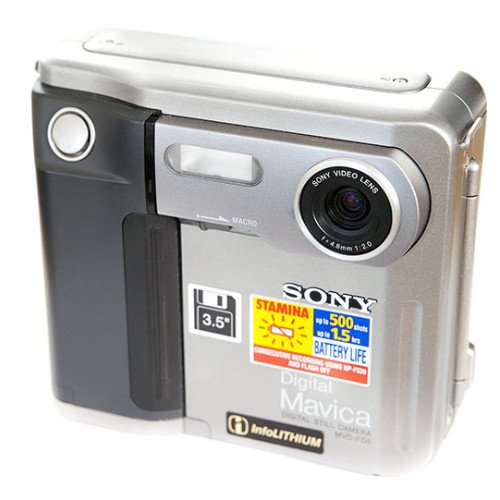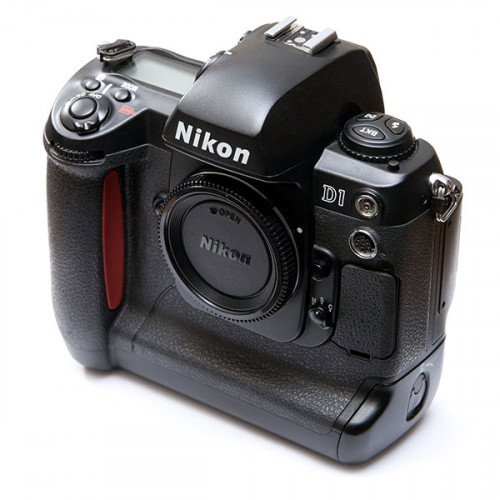Sony Mavica MVC-FD5, 1997 vs Nikon D1, 1999

Sony Mavica MVC-FD5, 1997
This is that camera that inaugurated Sony’s line of Mavica cameras that used 3.5-inch floppy discs for image storage. A true digital camera as indicted by its Digital Mavica logo, it captured a nominally 640 x 480-pixel image and its 4.8mm f/2.0 lens provided 35mm-equivalent coverage. It did not zoom or autofocus, but it had a macro-range switch for subjects in the 3-9-inch range. The 61k-dot (approximately 124 x 165 pixels) rear screen measured 2.5 inches diagonally and the camera was powered by a InfoLITHIUM rechargeable battery with a CR2025 button cell backup to retain camera settings. Sony simultaneously offered a more expensive alternative model, the Mavica FD7, which added an autofocusing zoom lens, a cutting-edge feature at the time. The FD5/FD7 yielded images that looked good on its small screen, but not so hot when printed out in larger sizes. However it piqued the imagination of techies and educators and set the stage for the consumer digital camera.
Statistics for this Xoptio

Nikon D1, 1999
The first Nikon-branded DSLR to challenge Kodak’s dominance in the professional DSLR arena, the D1 featured a 2.7MP DX-format CCD image sensor, had an impressive maximum burst rate of 4.5 fps, and accepted the full range of Nikon F-mount lenses. Its general configuration and controls, closely based on the Nikon F5, enabled Nikon shooters to make a seamless transition to digital, and its AF speed was impressive. The D1 also used the NTSC color space instead of the more conventional sRGB or Adobe RGB color spaces. Other features: ISO settings 200-1600 in 1-EV steps, removable Compact Flash (Type 1 or Type 2) storage media, maximum 2GB, 5-area AF with Multi-CAM AF System, 256-segment Matrix Metering, shutter speeds 30-1/16,000 sec plus B. The development of the Nikon D1 is generally accepted as one of the major milestones in the development of the digital camera, especially the pro-caliber DSLR.